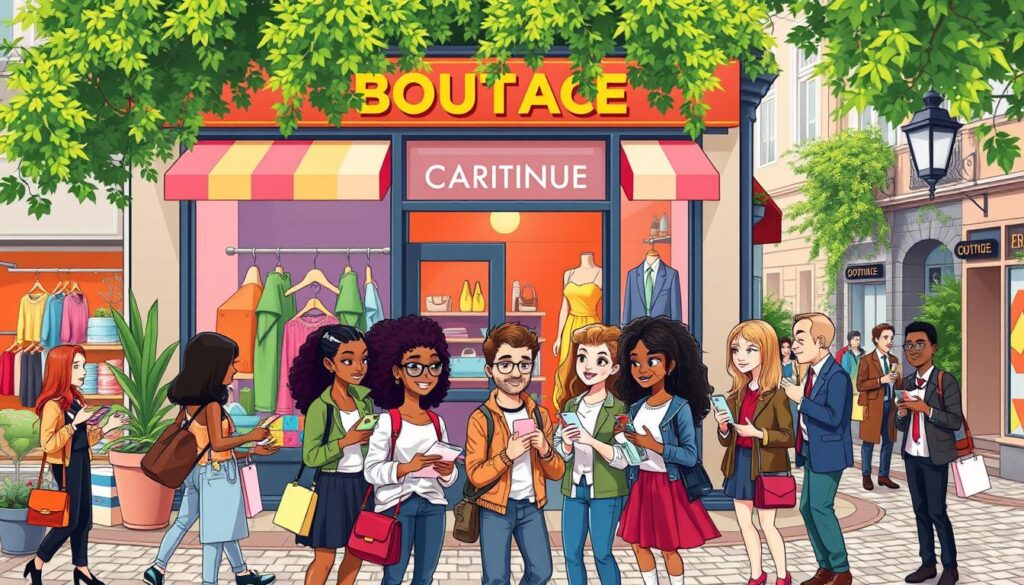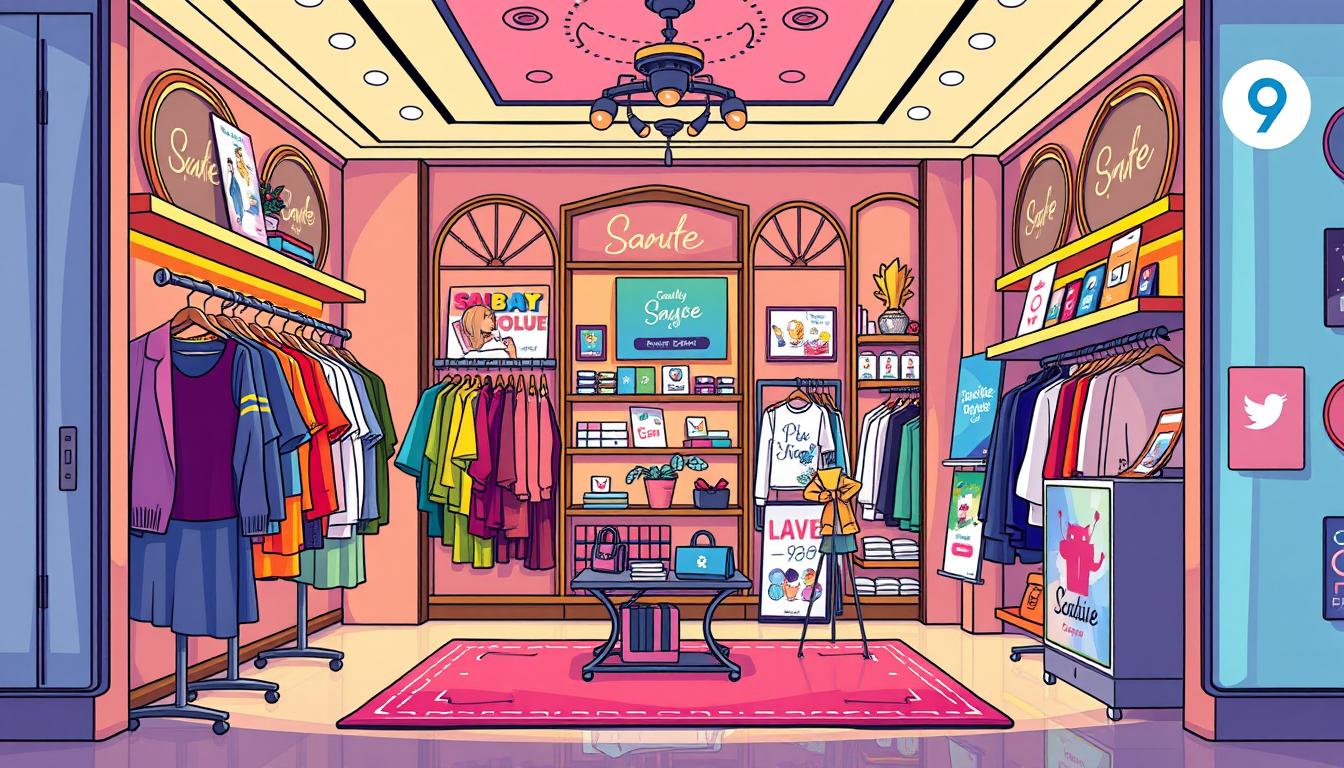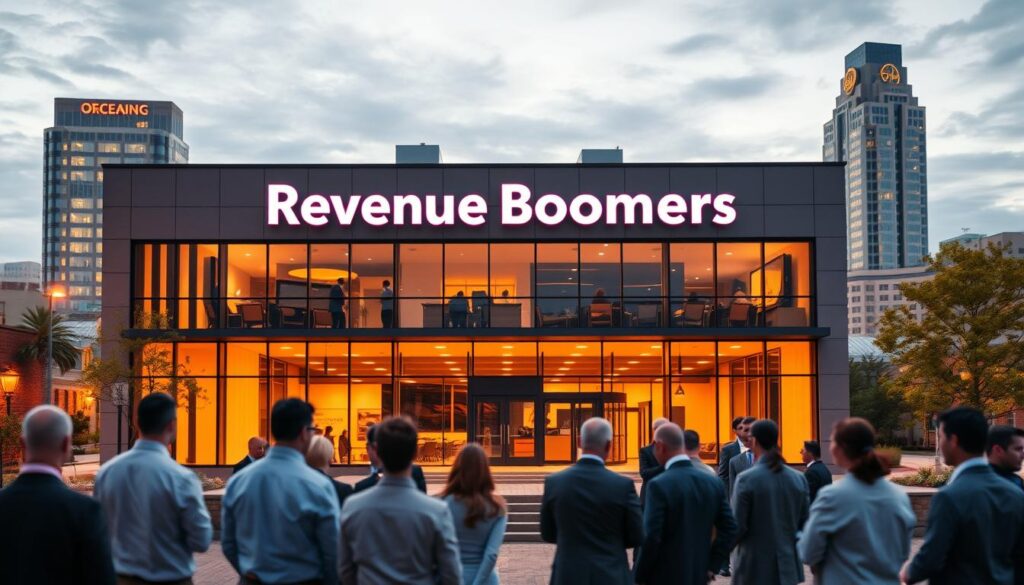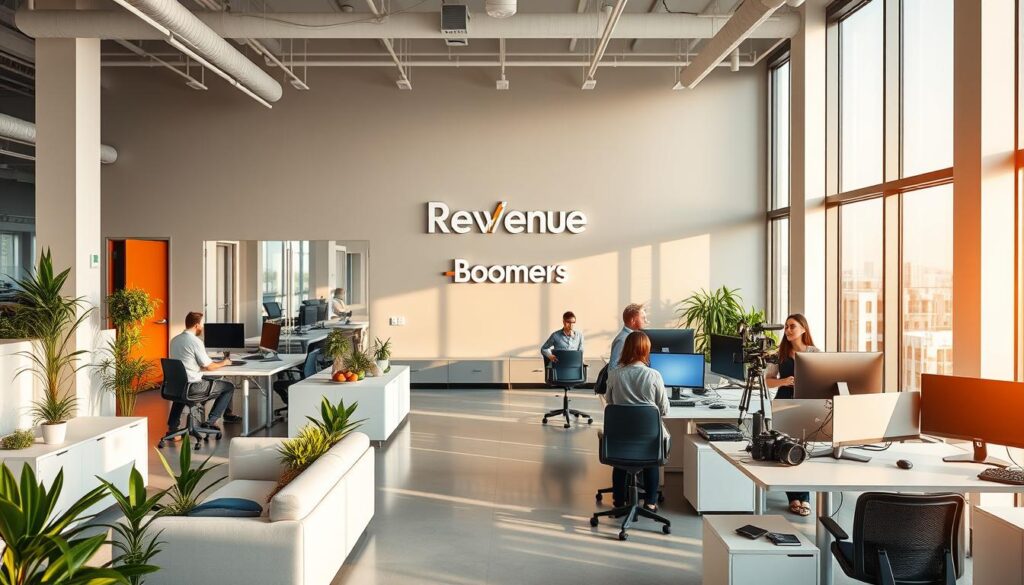In today’s fast-changing retail world, how can boutiques make their unique items stand out? The answer lies in smart marketing strategies. These strategies help boutiques not just get noticed but also boost sales. This guide is for boutique owners who want to master the marketing game.
It covers key topics like targeting the right customers, building a strong brand, and using digital platforms. By using these strategies, boutiques can tell stories that connect with customers and build loyalty.
To succeed today, boutiques must use digital tools and be creative. This guide will teach you how to attract the right people and improve your performance. One important topic is how SEO can greatly increase your website’s traffic.
For more insights, check out how SEO helps eCommerce. It shows how similar principles apply to boutique marketing.
Key Takeaways
- Understanding your target audience is crucial for effective boutique marketing.
- Defining a Unique Selling Proposition (USP) can significantly enhance customer attraction and retention.
- Leveraging social media effectively can amplify brand visibility and engagement.
- Creating memorable in-store experiences fosters customer loyalty.
- Utilizing SEO can lead to a significant increase in organic traffic for boutique websites.
- Exceptional customer service is key to improving retention rates.
- Implementing local marketing strategies can enhance foot traffic to your store.
Understanding the Unique Challenges of Boutique Marketing
Boutique owners face special challenges unlike big retail stores. Knowing these issues is key to making good marketing plans. First, figuring out who to market to is crucial. This helps shape what products to sell and how to talk to customers.
Identifying Your Target Audience
Finding the right customers is vital for a boutique’s success. Deep research and analysis are needed to understand what people want and like. A survey found that 65% of boutique owners think focusing on customers is key to selling more and keeping them coming back.
By making products that match what customers want, boutiques can do better. They can also connect more with their customers.
Crafting a Unique Brand Identity
Creating a brand that stands out is another big challenge. A boutique’s brand must be different from others and make customers loyal. Being consistent in how customers see the brand, like in product displays and online, helps a lot.
A study showed boutiques that pay attention to details in their products and presentation keep 25% more customers. This shows how important it is to have a brand that customers can relate to.
Competing with Larger Retailers
Dealing with big retailers is tough for boutiques. The market today needs new ways to grab people’s attention. By focusing on unique items, personal service, and community involvement, boutiques can shine.
Research found boutiques that try new marketing ideas sell 30% more than those that don’t. This approach helps build strong ties with local people and keeps them loyal to the brand.
Effective Digital Marketing Strategies for Boutiques
Digital marketing helps boutiques shine in a busy market. Good strategies boost customer interaction and sales. This part talks about social media, email marketing, and SEO for boutiques.
Leveraging Social Media Platforms
Social media is a big help for boutiques. Over 70% of businesses use Instagram stories to engage and share. It’s great for showing off products with pictures.
Starting with just $5 a day, small boutiques can reach more people. Having Facebook and Instagram business profiles lets boutiques talk directly to customers. They can show off products and run flash sales.
Working with influencers can also help. They bring new views that attract customers.
Utilizing Email Marketing Campaigns
Email marketing is very effective, with a median ROI of 122%. Good email campaigns are personal and visually appealing. They grab customer attention.
Offering special deals for sign-ups builds a strong email list. This leads to more repeat business.
Sharing customer feedback builds trust. Targeted content increases the chance of sales.
Search Engine Optimization (SEO) Essentials
In 2024, SEO is key for boutiques to be seen online. An SEO-friendly site gets more visitors. Making product descriptions better, using local keywords, and being mobile-friendly helps.
Having a blog also helps. It lets boutiques rank for more keywords. Using tools like the Facebook Pixel is important for better ads.
By using social media, email marketing, and SEO, boutiques can grow. For more on SEO, see this guide.
The Role of In-Store Experiences in Boutique Marketing
In today’s retail world, memorable in-store experiences are key to marketing success. Businesses focus on improving customer interactions to build loyalty and get more word-of-mouth. Personalized shopping experiences are favored by 76% of shoppers, who prefer memorable experiences over products. Also, 80% of customers buy more after joining a loyalty program.
Creating a Memorable Customer Experience
Improving the customer experience is more than just selling. It includes personalized services and exclusive events. Interactive demos help customers understand products better. About a quarter of shoppers like to try products before buying, showing the value of immersive experiences.
- Free samples can excite customers and encourage them to try new things.
- Events help brands show off unique items and build community.
- Loyalty programs keep customers coming back and engaged.
The Importance of Visual Merchandising
Visual merchandising is crucial for boutiques to grab and keep customer attention. Strategic placement and appealing displays draw people in. Around 50% of shoppers want to see product videos before buying, showing the power of visuals.

Boutiques should train staff well in visual merchandising to make the most of space. Good displays not only show off products but also tell the brand’s story. By learning from others, like automotive businesses, boutiques can build strong connections with customers.
Collaborating with SEO and Marketing Agencies
Working with boutique marketing agencies can give businesses a big advantage. These agencies focus on personal relationships and custom strategies. They are great for boutique retailers wanting to boost visibility and sales.
Why Revenue Boomers Stands Out in the Industry
Revenue Boomers is a top choice among boutique marketing agencies. It has a specialized approach and focuses on client success. The agency’s small team works closely together, responding quickly to client needs.
Being able to talk directly to company leaders during meetings helps a lot. It makes teamwork better and leads to smart decisions.
Benefits of Professional Marketing Support
Getting help from professional marketing agencies makes things easier and more efficient. Boutique agencies usually work with fewer clients, giving them more time for each one. This means better service and faster answers to questions.
They also know a lot about SEO, helping businesses grow online and save money. This is very important for boutiques.
Tailoring Strategies for Boutique Success
Working with boutique marketing agencies means getting strategies made just for your business. They use advanced SEO techniques like keyword research and content marketing. This helps boutiques reach the right people.
Agencies like Revenue Boomers are quick to adapt to market changes. Their e-commerce SEO services improve a business’s online presence. This brings more traffic and helps sell more.

Measuring Success and Adapting Your Marketing Strategies
To succeed in the competitive boutique world, it’s key to track specific success signs. Important signs include sales growth, how well you keep customers coming back, and website visits. By watching these, boutique owners can see how well their marketing works and make better plans for the future.
Key Performance Indicators (KPIs) to Track
Customer Acquisition Cost (CPA) shows how much it costs to get new customers. Cost Per Lead (CPL) shows how well your ads work. Keeping your website’s bounce rate between 25% and 40% means it’s engaging. Also, watching how long visitors stay on your site helps see if they’re interested in what you offer.
Adjusting Your Marketing Approach Based on Data
Using marketing analytics helps boutique owners make smart changes. By understanding what customers like, you can make ads that speak to them. Knowing which ads work best helps you focus your efforts, making your marketing more effective.
Continuous Learning and Development in Marketing
The retail world is always changing, so learning is key. Boutique owners should keep up with new trends and marketing tips. By always learning and using past data, boutiques can grow and stay ahead in the market. A commitment to learning keeps your marketing fresh and successful.
Want to boost your boutique’s online presence with SEO? Check out Revenue Boomers for more tips.






